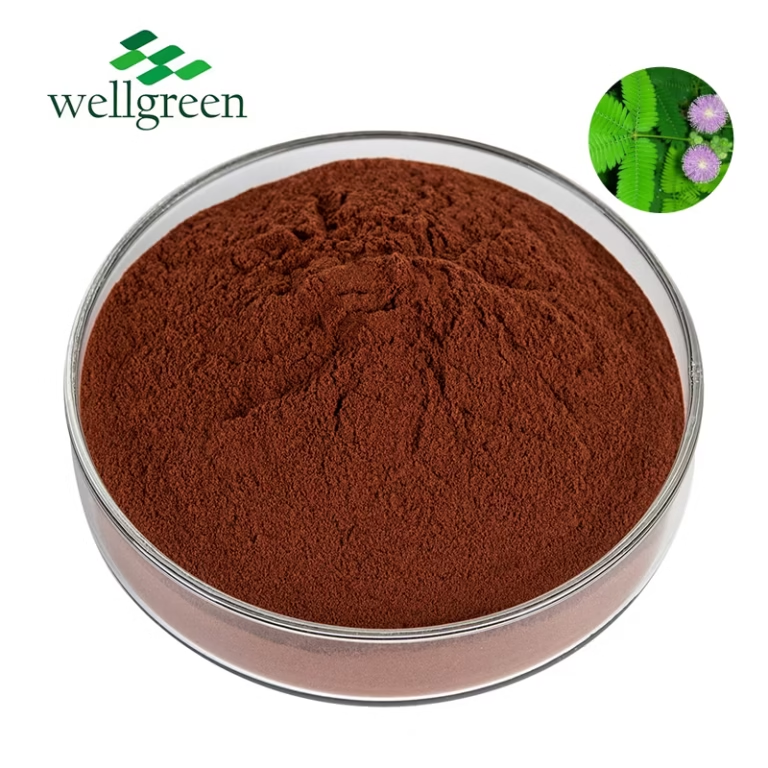Mimosa Hostilis: A Sacred Plant for Indigenous Cultures
Wiki Article

Mimosa hostilis is a significant plant deeply ingrained in the traditions of numerous Indigenous cultures across South America. For centuries, it has been utilized by indigenous check here communities for its diverse spiritual and medicinal properties. The root bark, known as ayahuasca, is particularly revered for its hallucinogenic effects, believed to unveil profound insights that facilitate healing.
Through ceremonies, the plant spirit of Mimosa hostilis is invoked, guiding individuals on a path of self-discovery and reconciliation with their inner selves. The knowledge concerning this sacred plant has been passed down through generations, preserving the rich cultural heritage and wisdom of these communities.
Exploring MHRB Extract: Unlocking Mimosa Hostilis's Potential
Mimosa hostilis, a vibrant plant indigenous to the Americas, has captured the attention of both traditional healers for centuries. This remarkable species harbors within its roots a potent compound known as MHRB, which has gained significant attention in recent times.
MHRB extract is celebrated for its effects, often associated with introspective journeys. Ancient practices suggest a long history of MHRB use in cultural practices.
- Researchers continue to investigate the chemical constituents of MHRB, seeking to uncover its full range of effects.
- The intricacies surrounding MHRB usage require responsibility. It is crucial to engage the expertise of knowledgeable individuals before exploring any practices involving this powerful compound.
Exploring the Ethnobotanical Uses of Mimosa tenuiflora
Mimosa tenuiflorae, commonly acknowledged as "the acacia", holds a significant position within the ethnobotany knowledge of diverse tribes. Its wide-ranging properties have been harnessed for centuries in ancestral medicinal practices, as well as in rituals. The bark of this remarkable plant possess a rich spectrum of bioactive compounds believed to exhibit medicinal effects.
From treating ailments like inflammation to boosting spiritual connection, Mimosa tenuiflora has long been honored for its profound effect on human health.
The Chemistry and Pharmacology of Mimosa Hostilis Root Bark
Mimosa hostilis root bark boasts a complex chemical profile, primarily known for its abundant concentrations of alkaloids. Among these, N,N-Dimethyltryptamine and tetrahydroharmine are particularly relevant. These molecules possess a range of pharmacological activities, including hallucinogenic effects. The bark is also various alkaloids, like norharmane, which may contribute to its comprehensive pharmacological profile.
The traditional uses of Mimosa hostilis root bark encompass a spectrum of therapeutic purposes, particularly in traditional cultures. However, it is crucial to recognize that scientific research on the effectiveness of these uses remains scarce.
Unlocking the Power of copyright with Mimosa Hostilis
Mimosa hostilis, a shrub native to South America, has captured the fascination of researchers and individuals alike for its potent alkaloids, particularly dimethyltryptamine, or copyright. copyright is a powerful psychoactive substance known for producing intense experiences. By consuming the bark of Mimosa hostilis, one can journey into the realms of copyright-induced experiences. It is essential to remember that copyright is a powerful substance and should be treated with caution.
- Safe use is paramount, and seeking guidance from experienced individuals or knowledgeable sources is highly recommended.
- The experience of copyright can be both rewarding but also potentially intense. It is essential to prepare both mentally and physically for the outcomes that may arise.
copyright from Mimosa hostilis presents a unique opportunity to journey within the depths of consciousness, possibly leading to spiritual growth and insight.
Challenges in Using Mimosa Hostilis
The utilization of Mimosa hostilis for traditional purposes raises a myriad of ethical questions. While some argue that its sacred significance warrants respect and tolerance, others oppose its use due to potential unforeseen consequences. It's crucial to approach this complex issue with sensitivity, taking into account the social contexts and potential risks. A balanced perspective is essential for navigating the ethical terrain surrounding Mimosa hostilis.
Raising Mimosa Hostilis: A Guide for Growers
Embarking on the journey of cultivating Mimosa Hostilis can be a gratifying experience for the dedicated grower. This enchanting plant, indigenous to tropical regions of the Americas, has gained significant recognition in recent years due to its peculiar properties. Upon embarking on your cultivation endeavor, it is crucial to understand the specific needs this plant demands to thrive.
- Ensuring adequate sunlight is paramount for healthy Mimosa Hostilis growth. These plants thrive in direct sunlight, ideally receiving a minimum of eight hours per day.
- Ensuring well-drained soil is essential to prevent root rot, a common problem that can devastate your plants. A mixture of sandy soil with organic matter is perfect.
- Frequent watering is necessary, but be mindful not to overwater your Mimosa Hostilis. Allow the top inch of soil to harden before providing another moistening.
The Shamanic Traditions Surrounding Mimosa Hostilis
Deep within the sacred forests of South America, the shrine of transformation have been woven for generations. Among these powerful allies is Mimosa Hostilis, a humble plant revered by the shamanspiritual traditions of indigenous peoples. It holds within its roots a wealth of power, guiding spirits on their journeys into the otherworld.
The elders understand that Mimosa Hostilis is not simply a medicinal agent; it is a bridge between dimensions, connecting us to the universal energies that flowaround all of creation.
Navigating Legal Challenges with Mimosa Hostilis
The legal status of mimosa hostilis differs significantly from one jurisdiction to another. This means that the legality of possessing, using, or cultivating this plant revolves around your exact area.
Furthermore, laws and regulations concerning mimosa hostilis are constantly changing. It is therefore vital that you carefully research the applicable legal framework in your locality.
- Talking to a legal professional who specializes in hemp laws is highly recommended.
- Staying informed about any updates to the law can help you prevent any potential legal difficulties.
Mimosa Hostilis and Spiritual Exploration: A Journey Inward seeking
The ancient wisdom whispered through the rustling leaves of Mimosa Hostilis calls to voyagers on a mystical quest. Journeying upon this path is to awaken hidden dimensions within, where the veil between worlds fades. It's a powerful experience that guides the soul, revealing truths latent beneath the surface. As you blend with the essence of this sacred plant, be prepared for visions that reshape your perception.
- Embrace the unknown with an open heart and a curious mind.
- Surrender all expectations and allow yourself to be carried by the flow.
- Remember, this is a journey of self-discovery. Have faith in your own intuition.
The wisdom gained through Mimosa Hostilis echoes long after the experience has passed. It is a blessing that can alter your life in profound and lasting ways.
Understanding the Challenges and Advantages of Mimosa Hostilis
Mimosa hostilis is a plant native to South America, gaining increasing attention for its potential pharmacological properties. While it contains valuable compounds like copyright, responsible for its psychoactive effects, it's crucial to approach this plant with caution. Understanding both the potential downsides and the positive aspects of Mimosa hostilis is essential for safe and informed use. Potential negative consequences can include physical reactions, emphasizing the need for thorough research, responsible consumption, and a safe environment.
- It's important to consult with a healthcare professional before using Mimosa hostilis or any products derived from it.
- Proper dosage is crucial to minimize potential risks.
- Be aware of the legal status surrounding Mimosa hostilis in your area.
- Always prioritize safety and well-being when exploring the use of this plant.
 Report this wiki page
Report this wiki page